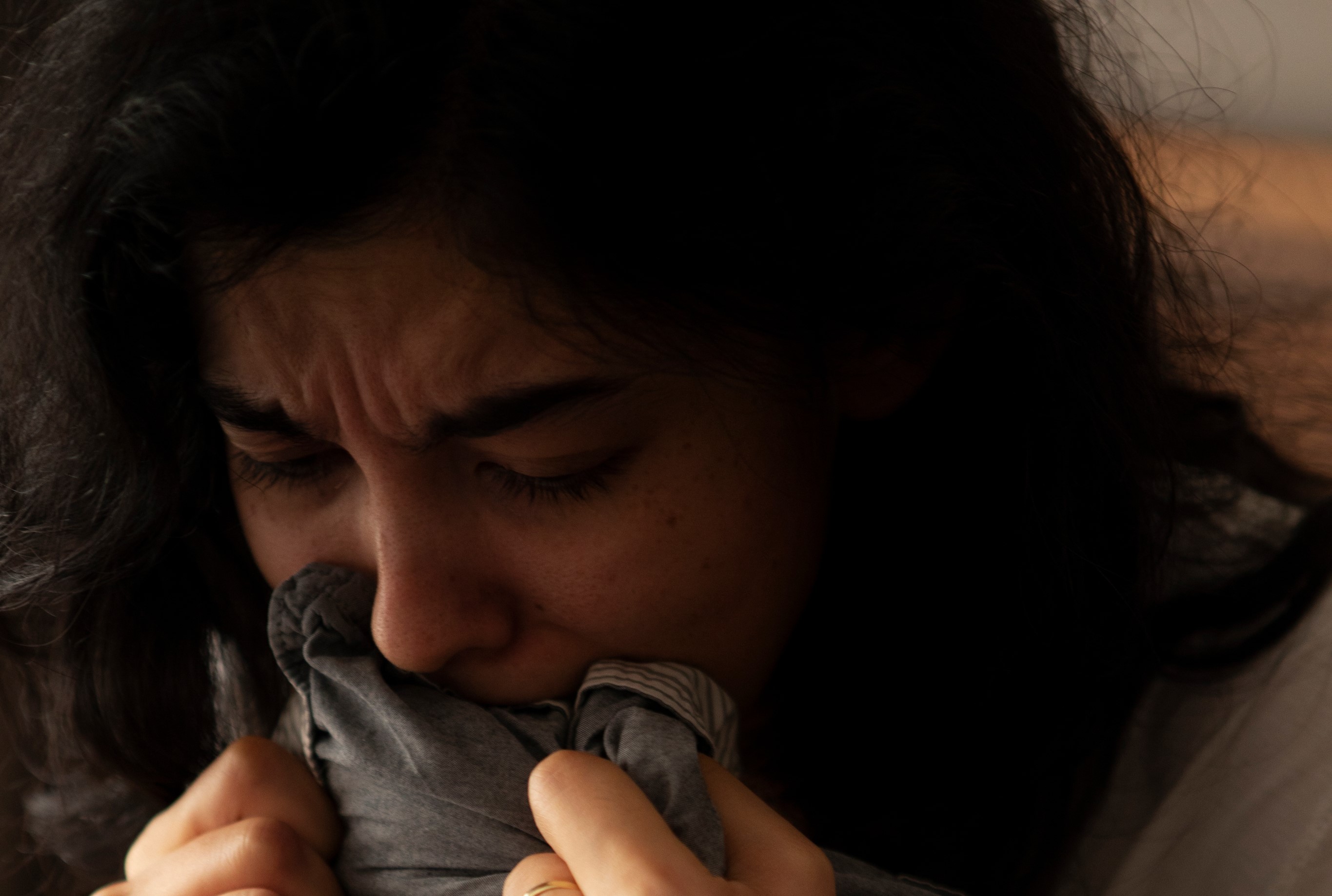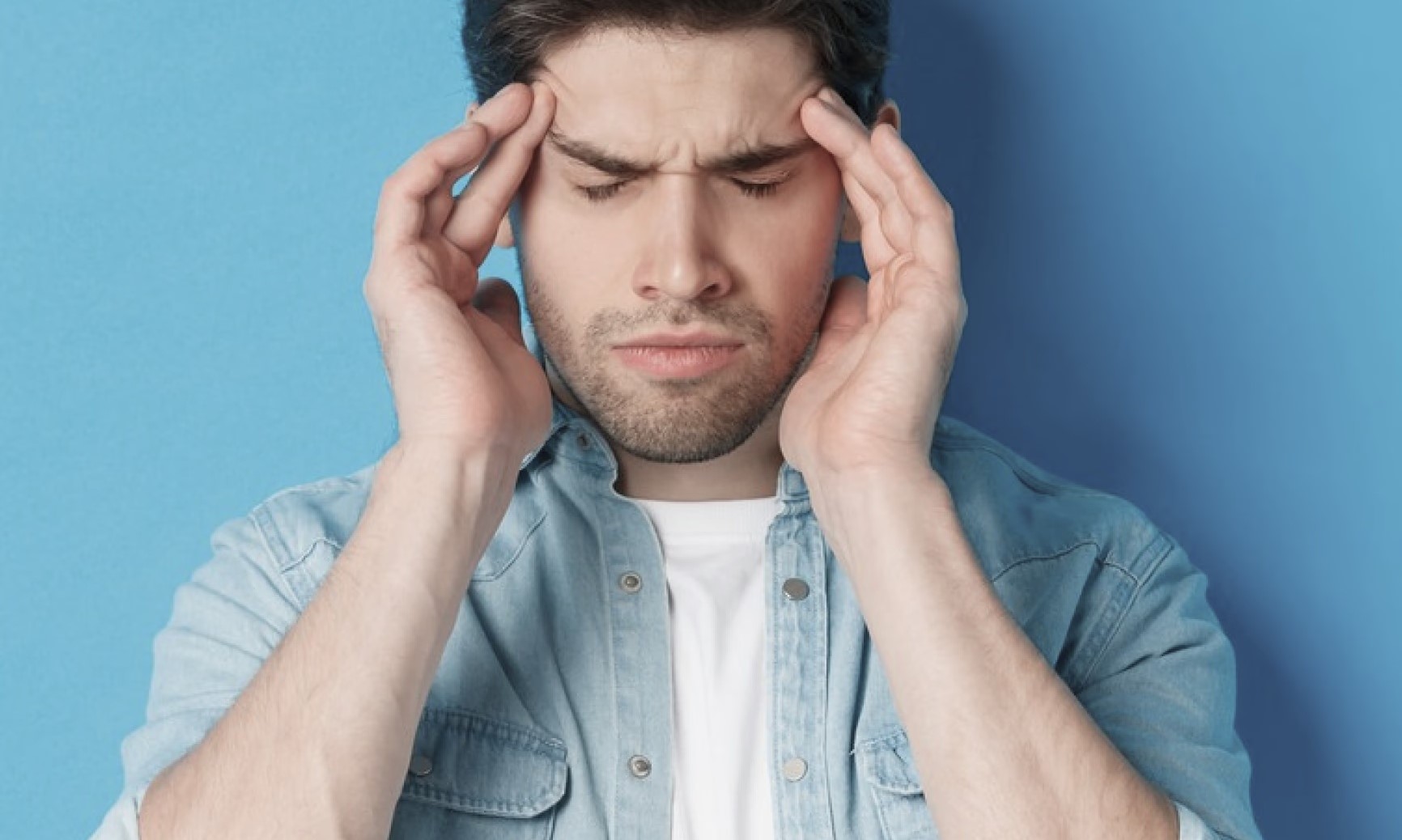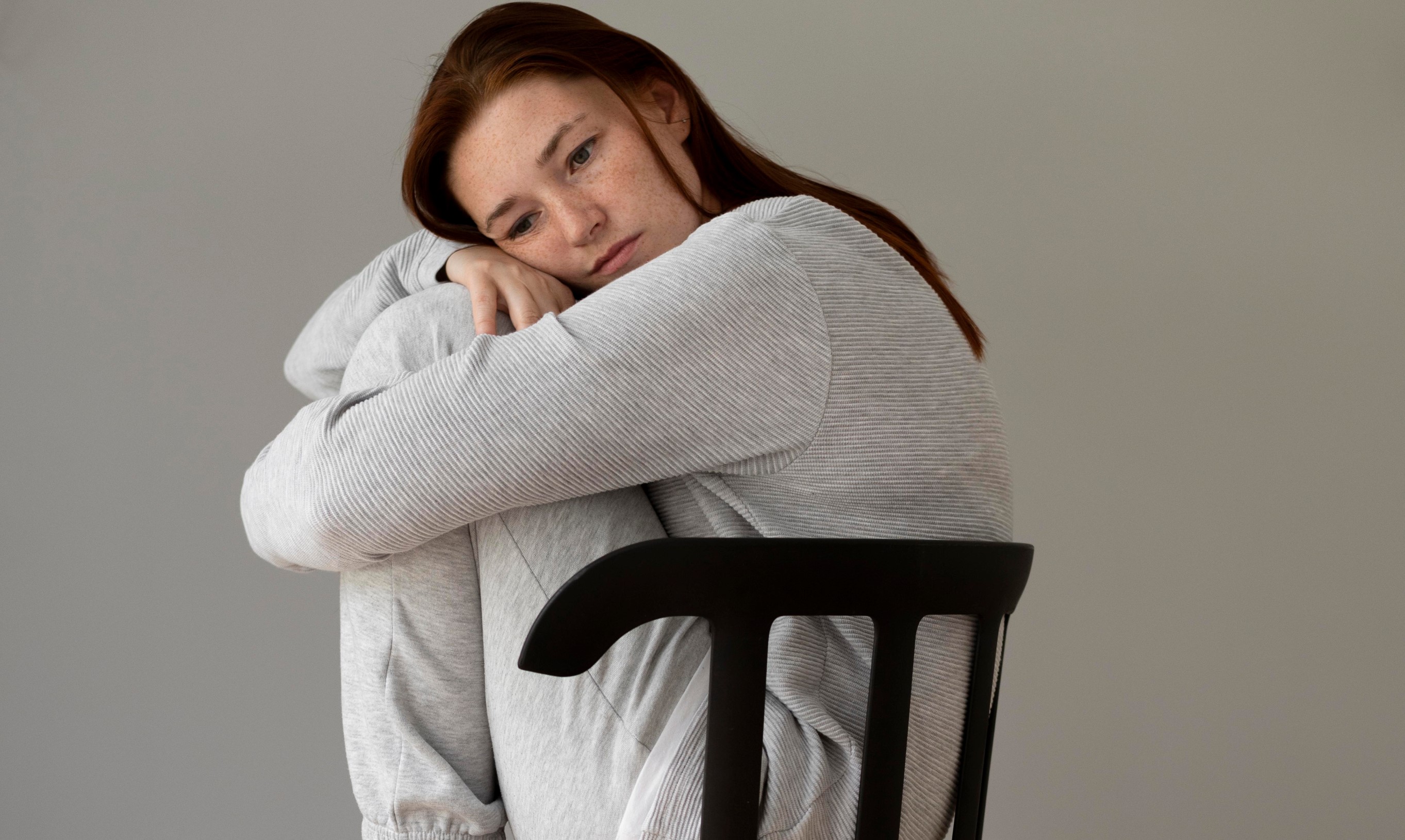
A comprehensive guide to understanding PTSD and its symptoms, causes, effects and what treatment options are available.
PTSD can make you feel stuck in survival mode long after the danger has passed. You might relive traumatic events, avoid people or places, or struggle with sleep and emotional numbness.
It begins after a traumatic experience, like war, abuse, or serious accidents, that overwhelms your ability to cope.
These symptoms impact your relationships, concentration, and overall physical well-being. According to the U.S. Department of Veterans Affairs, in any given year, approximately 5% of adults in the U.S. have PTSD.
Treatment includes therapy, medication, and lifestyle changes that help you regain control. With the right support, healing is possible.
What Is PTSD?
Post-Traumatic Stress Disorder (PTSD)is a mental health condition that develops after you experience or witness a traumatic event. This could be a life-threatening situation, severe accident, natural disaster, combat exposure, sexual assault, or repeated abuse.
PTSD is more than just feeling upset after trauma; it involves lasting psychological distress that interferes with your daily life. According to the U.S. Department of Veterans Affairs, About 6% of the U.S. population will experience PTSD at some point in their lives.
You’re more at risk of developing PTSD if you’ve faced intense or prolonged trauma. This includes military veterans, survivors of childhood abuse, sexual assault victims, first responders, and people who’ve lived through accidents or disasters.
Even witnessing violence or hearing about the traumatic experience of a loved one lead to PTSD.
What Are the Main Symptoms of PTSD?
The main symptoms of PTSD are intrusive thoughts, avoidance behaviors, negative changes in mood and thoughts and hyperarousal and reactivity. These symptoms are psychological, emotional, or even physical, and they usually fall into four key categories.
Here are the main symptoms of PTSD:
-
Intrusive Thoughts: You experience flashbacks, nightmares, or unwanted memories that force you to relive the trauma as if it’s happening again.
-
Avoidance Behaviors: You go out of your way to avoid certain people, places, conversations, or objects that remind you of the trauma.
-
Negative Changes in Mood and Thoughts: It’s common to feel persistent sadness, guilt, shame, or detachment. You lose interest in things you once enjoyed or feel emotionally numb.
-
Hyperarousal and Reactivity: You could feel constantly on edge, have trouble sleeping, startle easily, or become unusually irritable or aggressive.
Some people also deal with physical symptoms like headaches, digestive problems, fatigue, or chest pain, especially when the body remains in a prolonged stress state.
What Causes PTSD to Develop in a Person?
The Causes of PTSD, development in a person include trauma exposure, emotional intensity, lack of support, developmental stage, and biological sensitivity. These factors determine how your brain processes distress and whether your body stays stuck in survival mode long after the danger has passed.
Below is what causing to PTSD to develop in a person:
-
Trauma Exposure: Experiencing or witnessing a life-threatening event overwhelms your ability to cope. Whether it’s war, abuse, or an accident, the shock disrupts how your brain stores and recalls memory.
-
Emotional Intensity: The more fear, helplessness, or horror you feel during a traumatic moment, the more likely your nervous system is to freeze. These strong emotional imprints lead to flashbacks and intrusive thoughts.
-
Lack of Support: Not having a safe person to talk to after trauma increases your vulnerability. Without emotional validation or guidance, your mind isolates and internalizes fear.
-
Developmental Stage: Trauma that happens in childhood affects you differently than in adulthood. At a young age, your brain is still forming, so early trauma can alter emotional regulation and attachment patterns.
-
Biological Sensitivity: Some people are more genetically or hormonally reactive to stress. If you already have anxiety, depression, or a family history of mental health issues, trauma triggers more intense PTSD symptoms.
How Does PTSD Affect the Brain and Body?
PTSD affects the brain structure, hormone levels, immune response, sleep cycles, and physical health. These disruptions help explain why trauma linger physically and emotionally, long after the event has passed.
Below is how PTSD affects your brain and body:
- Brain Structure: PTSD alters key areas of your brain, especially the amygdala, hippocampus, and prefrontal cortex. These changes make you hyper-alert to danger, prone to memory distortion, and less able to regulate emotions.
- Stress Hormones: Your body produces excessive cortisol and adrenaline after trauma. These hormones keep you in a constant fight-or-flight state, which affects your digestion, heart rate, and mental clarity.
- Immune Response: Chronic stress from PTSD weakens your immune system. You become more prone to infections, inflammation, and autoimmune conditions due to prolonged physiological stress.
- Sleep Cycles: PTSD disrupts your ability to fall or stay asleep. Nightmares, insomnia, and nighttime anxiety prevent restorative rest and worsen emotional regulation.
- Physical Health: Over time, the physical toll of PTSD lead to headaches, stomach issues, chronic pain, and fatigue. These symptoms are real and stem from how trauma affects your nervous system and overall well-being.
Can PTSD Affect Daily Life and Relationships?
Yes, PTSD can affect daily life and relationships. emotional control, work habits, trust-building, intimacy, and social engagement. These difficulties make everyday routines feel overwhelming and create distance between you and the people around you.
You struggle with sudden mood swings, anger, or sadness that feel out of proportion. These emotional surges are rooted in your brain’s heightened sensitivity to perceived threats.
PTSD reduces your focus, productivity, and ability to handle stress. Flashbacks or sleep disturbances might affect your attendance, while irritability strains coworker interactions.
It becomes harder to trust others when you constantly feel unsafe. This lack of trust make forming new friendships or maintaining long-term bonds more difficult.
What Are the Different Types of PTSD?
The different types of PTSD include acute PTSD, chronic PTSD, complex PTSD, and comorbid PTSD. These types help explain why people experience PTSD differently and need tailored approaches to recovery.
Below are the different types of PTSD you experience or witness:
- Acute PTSD: This form develops within three months after the traumatic event. Symptoms are intense but may lessen with early treatment and support.
- Chronic PTSD: If your symptoms last longer than three months and continue to disrupt daily life, it’s considered chronic. This type often involves long-term trauma or untreated acute PTSD.
- Complex PTSD: Complex PTSD arises from prolonged or repeated trauma, such as ongoing abuse or captivity. You may deal with severe emotional dysregulation, self-worth issues, and difficulty maintaining relationships.
- Comorbid PTSD: This type occurs alongside other mental health conditions like depression, anxiety, or substance use disorder. The overlap can make symptoms harder to treat without a comprehensive approach.
What Treatments Are Available for PTSD?
The main treatments available for PTSD include cognitive behavioral therapy, eye movement desensitization and reprocessing, prolonged exposure therapy, medication, and integrative care options. These approaches work together to reduce symptoms, improve daily functioning, and help you regain control over your life. PTSD treatment is life-saving and necessary to seek if you are struggling.
Below are the most effective treatments for PTSD:
- Cognitive Behavioral Therapy (CBT): CBT helps you identify and change harmful thought patterns linked to your trauma. This structured talk therapy allows you to gradually face your fears in a safe environment.
- Eye Movement Desensitization and Reprocessing (EMDR): EMDR uses guided eye movements while you recall distressing memories. Over time, this helps your brain reprocess the trauma and reduce its emotional charge.
- Prolonged Exposure Therapy: This therapy involves confronting trauma-related memories, feelings, or situations that you’ve been avoiding. Facing these triggers under the guidance of a therapist helps weaken their emotional impact.
- Medication: Doctors prescribe antidepressants like SSRIs (e.g., sertraline, paroxetine) to ease anxiety, depression, and sleep issues. Medication doesn’t erase trauma, but it supports your ability to engage in therapy.
- Integrative Care: Practices like yoga, mindfulness, acupuncture, or trauma-informed massage help you reconnect with your body. These options work best when combined with professional therapy and medical support. Also Spravato Infusions and TMS are helpful with treatment resistant disorders.
What Coping Strategies Help Manage PTSD Long-Term?
Long-term coping strategies for PTSD include healthy routines, peer support, grounding techniques, lifestyle changes, and creative outlets. These tools help you build resilience and manage symptoms between therapy sessions or outside of clinical care.
Below are coping strategies that help manage PTSD over time:
- Healthy Routines: Create a consistent daily schedule that includes sleep, nutrition, and exercise. Stability in your routine helps your nervous system feel safer and more predictable.
- Peer Support: Talking with others who understand trauma reduce feelings of isolation. Support groups, whether in person or online, offer a safe space for sharing experiences and coping strategies.
- Grounding Techniques: Methods like deep breathing, 5-4-3-2-1 sensory focus, or using a grounding object help bring you back to the present. These techniques are especially helpful during flashbacks or panic episodes.
- Lifestyle Changes: Reducing alcohol, caffeine, and screen time minimize overstimulation. You’ll also benefit from prioritizing rest, spending time in nature, and setting clear boundaries in your relationships.
- Creative Outlets: Art, music, journaling, or movement-based practices give you a safe way to express emotions. These outlets also help process trauma that’s hard to verbalize in therapy
Can PTSD Be Cured or Fully Recovered From?
No, PTSD cannot be permanently “cured” in a traditional sense, but yes, you can recover and live a fulfilling life with the right treatment and support.
Many people experience significant symptom relief, enter remission, and regain control of their emotions and routines. Recovery doesn’t mean forgetting the trauma, it means learning to manage its impact and reclaiming your sense of safety and identity. With evidence-based therapies, medication management, lifestyle changes, and strong support systems, long-term healing is absolutely possible.
When Should You Seek Help for PTSD?
You should seek professional help for PTSD when your symptoms interfere with your ability to function, connect with others, or feel safe. It’s especially important if your distress lasts longer than a month, worsens over time, or causes suicidal thoughts.
Other signs include constant nightmares, severe anxiety, emotional numbness, or outbursts that affect your work or relationships. Getting support early prevent symptoms from becoming more intense or long-lasting.
Where Can You Get Help For PTSD?
You can get help for PTSD through local clinics, hospitals, private therapists, veterans’ services, or crisis hotlines. Community mental health centers offer affordable support, while private therapists provide tailored treatment.
Veterans access specialized PTSD care through VA facilities. In emergencies, hospitals offer immediate evaluation and referrals. You also call 988 or use online platforms to connect with licensed professionals anytime.
How Can PTSD Be Prevented After Trauma?
You can reduce the risk of developing PTSD after trauma by seeking early intervention, building emotional resilience, and staying connected to supportive people. Getting help soon after a traumatic event, such as through crisis counseling or brief therapy, helps your brain process the experience before it becomes deeply embedded.
Practices like mindfulness, regular exercise, and journaling also support your recovery. The sooner you address your emotional needs, the better your chances of preventing long-term effects.




